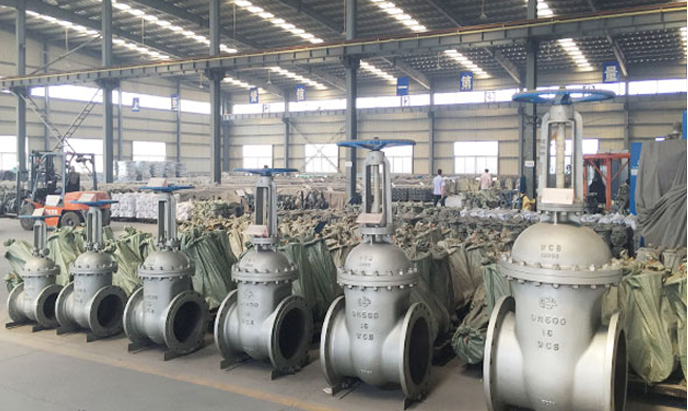flanges for butterfly valves manufacturer
Flanges for Butterfly Valves An Essential Component
Butterfly valves are widely utilized in various industrial applications, serving as a crucial component in the control of fluid flow. Among the key elements of a butterfly valve assembly, flanges play an essential role in ensuring the valve’s functionality, reliability, and efficiency. This article will delve into the significance of flanges for butterfly valves, exploring their types, manufacturing, and the considerations that need to be taken into account when selecting the right flange.
Understanding Butterfly Valves
Before delving into flanges, it is vital to understand the basic structure of butterfly valves. These valves consist of a circular disc that rotates around a shaft to regulate the flow of fluids through a pipe. When the disc is parallel to the flow, the valve is fully open; when it is perpendicular, the valve is closed. Due to their design, butterfly valves are advantageous in terms of space, weight, and cost, making them a popular choice in various applications, including water treatment, chemical processing, and HVAC systems.
The Role of Flanges
Flanges are the mechanical components used to connect the valve to the piping system. They provide a reliable method of attachment, allowing for a secure and leak-proof joint. The importance of flanges in butterfly valves cannot be overstated, as they
1. Facilitate Installation and Maintenance Flanges enable easy installation and removal of butterfly valves, making maintenance straightforward. This ease of access is crucial for minimizing downtime and ensuring smooth operational efficiency.
2. Ensure Structural Integrity When properly installed, flanges create a robust joint that can withstand high pressures and temperatures, contributing to the overall integrity of the piping system.
3. Provide Versatility Different types of flanges are available to accommodate various piping systems and installation needs, allowing for flexibility in design and application.
Types of Flanges
Flanges for butterfly valves come in several types, each suited to specific requirements
1. Weld Neck Flanges These flanges are welded to the pipe, providing a strong connection and reducing the risk of leakage. They are ideal for high-pressure applications.
flanges for butterfly valves manufacturer

2. Slip-On Flanges As the name suggests, these flanges slip over the pipe and are then welded in place. They are easier to align during installation but may not handle heavy loads as well as weld neck flanges.
3. Blind Flanges Used to close off the end of a piping system, blind flanges do not have a hole in the center. They are essential for isolating a section of the system during maintenance or when future expansion is planned.
4. Threaded Flanges These flanges are threaded on the inside and can be easily attached to a pipe without welding. They are less common for high-pressure applications but offer flexibility in installations.
5. Socket Weld Flanges Similar to slip-on flanges, socket weld flanges allow for easy alignment but require the pipe to be inserted into the flange before welding.
Considerations for Selecting Flanges
When choosing flanges for butterfly valves, several factors should be considered
1. Material Compatibility The choice of material correlates with the fluid being transported. Common materials include stainless steel, carbon steel, and plastic, each offering different properties of corrosion resistance and strength.
2. Pressure and Temperature Ratings It is crucial to select flanges with suitable pressure and temperature ratings to ensure safe and reliable operation within the system’s parameters.
3. Standards and Specifications Adhering to industry standards such as ASME, ANSI, or API ensures compatibility and performance consistency across various applications.
4. Installation Requirements Different installations may require specific types of flanges, choosing the type best suited for the system layout and maintenance needs.
Conclusion
Flanges for butterfly valves are an integral part of fluid control systems, providing strength, reliability, and flexibility. Choosing the right flange type and material significantly impacts the overall performance and longevity of the valve and piping system. By understanding the various types of flanges and their applications, engineers and decision-makers can ensure that their systems operate efficiently and safely. As industries continue to evolve and demand more sophisticated solutions, the importance of high-quality flanges for butterfly valves remains a cornerstone of efficient fluid management.
-
The Key to Fluid Control: Exploring the Advantages of Ball Valves in Industrial SystemsNewsJul.09,2025
-
The Versatile World of 1, 2, and 3 Piece Ball ValvesNewsJul.09,2025
-
Stainless Steel Ball Valves: The Ideal Choice for Efficient Flow ControlNewsJul.09,2025
-
Optimizing Fluid Control with Ball Float ValvesNewsJul.09,2025
-
Manual Gate Valves: Essential for Control and EfficiencyNewsJul.09,2025
-
Everything You Need to Know About Butterfly ValvesNewsJul.09,2025
-
The Versatility of Wafer Type Butterfly ValvesNewsJul.08,2025




